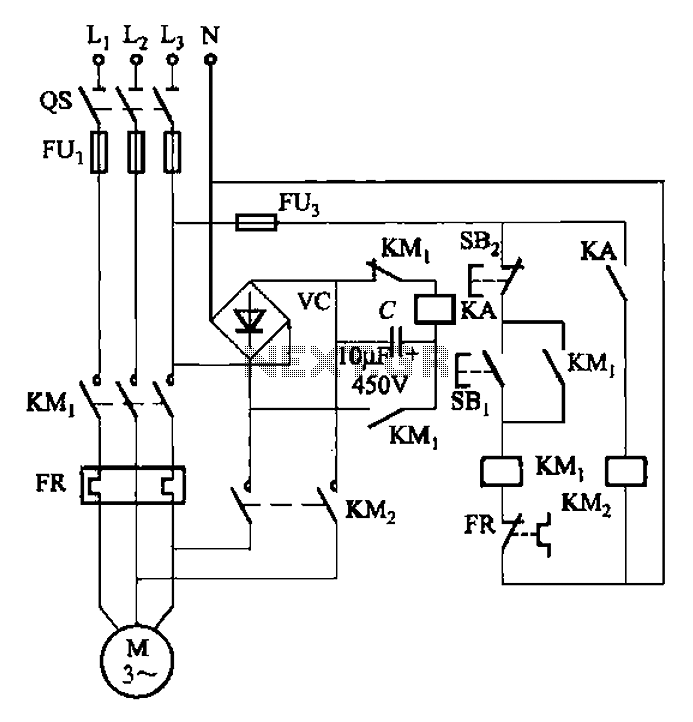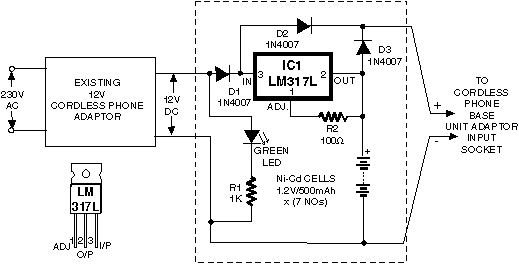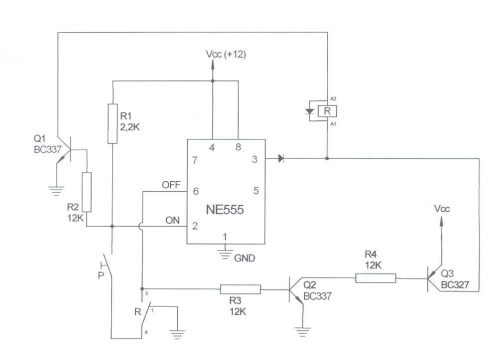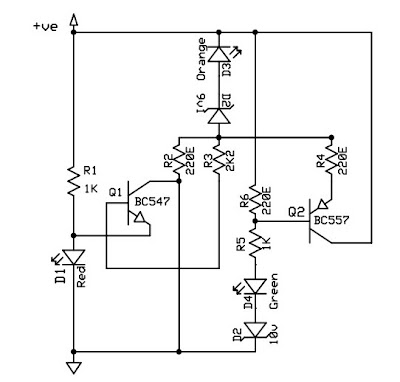
Crystal Oscillator Circuit
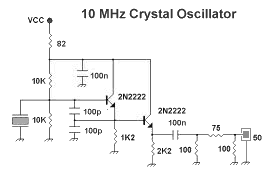
A crystal oscillator circuit is a straightforward oscillator circuit that can be easily understood through its schematic diagram. It serves as a replacement for a conventional oscillator network, which typically consists of an LC combination. This simplicity is also evident in the minimal number of physical components, resulting in a compact design that occupies less space on a printed circuit board (PCB). The layout of the components should be optimized to achieve the best performance. For those interested in understanding how a crystal oscillator circuit operates, a frequency counter can display a very stable frequency without the need for a PCB; it is sufficient to connect the pins of the involved components. However, for optimal performance, it is essential to have data regarding the technical specifications of the crystal oscillator and its components. Datasheets for the crystal oscillator, as well as for any necessary transistors or integrated circuits (ICs), can be downloaded. The arrangement of components also influences the quality of the output frequency. Below are examples of crystal oscillator circuits for practical applications. One such circuit employs a crystal to generate a 32.768 kHz square wave output, which is then fed into a 15-stage binary counter to produce a 1-second square wave output. The oscillator circuit diagram utilizes a CMOS inverter (4069) to achieve a better waveform, although a single transistor can also be employed. It is noteworthy that if a 32.768 kHz crystal is not available for purchase, it can often be salvaged from non-functional watches or computer motherboards. The EM7604 low-power crystal oscillator module, operating at 32.768 kHz, is another viable option. This advanced low-power CMOS circuit is designed to work with a 32.768 kHz tuning fork crystal as a low-frequency clock oscillator, requiring no additional external components. It offers excellent oscillator stability with very low power consumption and is guaranteed to operate over a wide range of supply voltages and temperatures. To achieve high-frequency accuracy, matched crystals should have a tolerance of ± 20 ppm or better. Another example is a crystal oscillator circuit with a 1 MHz output frequency, which serves as the base frequency for a signal generator using the TTL SN7490 decade counter IC. This frequency can be divided into several lower frequencies using frequency dividers of 10 and 2.
Crystal oscillators are widely used in various applications, including timekeeping devices, communication systems, and signal processing. The fundamental operation of a crystal oscillator relies on the piezoelectric properties of quartz crystals, which resonate at specific frequencies when an alternating current is applied. The precision of the output frequency is a key advantage of crystal oscillators, making them ideal for applications where timing accuracy is critical.
The design of a crystal oscillator circuit typically involves selecting the appropriate crystal, which determines the oscillation frequency. The circuit usually includes an amplifier to sustain oscillation and feedback components to ensure stability. In the case of the CMOS inverter-based oscillator, the inverter provides the necessary gain, while the crystal sets the frequency of oscillation. The output can be further processed or divided down using counters or additional circuitry to meet specific application requirements.
When designing a PCB for a crystal oscillator, careful attention must be paid to the layout to minimize parasitic capacitance and inductance, which can adversely affect frequency stability and performance. Ground planes and short trace lengths are recommended to enhance signal integrity. Additionally, decoupling capacitors may be included near power supply pins to filter out noise.
In summary, crystal oscillator circuits are essential components in modern electronics, providing stable and accurate frequency sources for a wide range of applications. Proper design and implementation, including component selection and PCB layout, are crucial for achieving optimal performance.Crystal oscillator circuitis a simple oscillator circuit when we look at the schematic diagram. A crystal oscillator circuit is nothing but a replacement of an ordinary oscillator network, which is a combination of LC. This simplicity is also reflected in the number of physical components that are very compact, which occupy your printed circuit bo
ard. You live alone design the layout of components in such a way as to give the best results. Based on experience in designing a crystal oscillator, I can say very easily. If it is limited to a curiosity about how acrystal oscillator circuitis working, then the frequency counter is readable display a very stable frequency. Without having to make a PCB, simply by connecting the pin connections between the components involved.
However, for optimal results should be required data regarding the technical specifications of the crystal oscillator, and the components involved. You can just download the datasheet the crystal oscillator, and if necessary for the transistor or integrated circuit (IC) as well.
In addition, the layout of the components that also affect the quality of the output frequency. Here below are some of the crystal oscillator circuits for practical use. The following oscillator circuit using a crystal to produce 32. 768 KHz square wave output, and then fed to a 15 stage binary counter with 1 second square wave output. In the oscillator circuit diagram of the IC using a CMOS inverter 4069, to produce a better waveform, but a single transistor can be used.
As a note, if you do not want to buy a 32. 768 KHz crystal, can usually be found on a watch or computer mainboard that is damaged or not used anymore. EM7604, Low Power Crystal Oscillator 32. 768 KHz module can also be an option. EM7604 is an advanced low power CMOS circuit intended to be used together with a 32 768 kHz tuning fork crystal as a low-frequency clock oscillator.
Except the crystal, no other external components are required. The device combines excellent oscillator stability with very low power consumption. It is guaranteed over a very wide supply voltage and temperature range. In order to Achieve a high-frequency accuracy, the matched crystals should have a ± 20ppm tolerance or tighter. Crystal oscillator circuitwith the output frequency of 1 MHz as a base frequency of a signal generator using TTL SN7490 decade counter IC.
Basis of this frequency will be divided into several lower frequencies through a frequency divider 10 and 2. We aim to transmit more information by carrying articles. Please send us an E-mail to wanghuali@hqew. net within 15 days if we are involved in the problems of article content, copyright or other problems.
We will delete it soon. 🔗 External reference
Crystal oscillators are widely used in various applications, including timekeeping devices, communication systems, and signal processing. The fundamental operation of a crystal oscillator relies on the piezoelectric properties of quartz crystals, which resonate at specific frequencies when an alternating current is applied. The precision of the output frequency is a key advantage of crystal oscillators, making them ideal for applications where timing accuracy is critical.
The design of a crystal oscillator circuit typically involves selecting the appropriate crystal, which determines the oscillation frequency. The circuit usually includes an amplifier to sustain oscillation and feedback components to ensure stability. In the case of the CMOS inverter-based oscillator, the inverter provides the necessary gain, while the crystal sets the frequency of oscillation. The output can be further processed or divided down using counters or additional circuitry to meet specific application requirements.
When designing a PCB for a crystal oscillator, careful attention must be paid to the layout to minimize parasitic capacitance and inductance, which can adversely affect frequency stability and performance. Ground planes and short trace lengths are recommended to enhance signal integrity. Additionally, decoupling capacitors may be included near power supply pins to filter out noise.
In summary, crystal oscillator circuits are essential components in modern electronics, providing stable and accurate frequency sources for a wide range of applications. Proper design and implementation, including component selection and PCB layout, are crucial for achieving optimal performance.Crystal oscillator circuitis a simple oscillator circuit when we look at the schematic diagram. A crystal oscillator circuit is nothing but a replacement of an ordinary oscillator network, which is a combination of LC. This simplicity is also reflected in the number of physical components that are very compact, which occupy your printed circuit bo
ard. You live alone design the layout of components in such a way as to give the best results. Based on experience in designing a crystal oscillator, I can say very easily. If it is limited to a curiosity about how acrystal oscillator circuitis working, then the frequency counter is readable display a very stable frequency. Without having to make a PCB, simply by connecting the pin connections between the components involved.
However, for optimal results should be required data regarding the technical specifications of the crystal oscillator, and the components involved. You can just download the datasheet the crystal oscillator, and if necessary for the transistor or integrated circuit (IC) as well.
In addition, the layout of the components that also affect the quality of the output frequency. Here below are some of the crystal oscillator circuits for practical use. The following oscillator circuit using a crystal to produce 32. 768 KHz square wave output, and then fed to a 15 stage binary counter with 1 second square wave output. In the oscillator circuit diagram of the IC using a CMOS inverter 4069, to produce a better waveform, but a single transistor can be used.
As a note, if you do not want to buy a 32. 768 KHz crystal, can usually be found on a watch or computer mainboard that is damaged or not used anymore. EM7604, Low Power Crystal Oscillator 32. 768 KHz module can also be an option. EM7604 is an advanced low power CMOS circuit intended to be used together with a 32 768 kHz tuning fork crystal as a low-frequency clock oscillator.
Except the crystal, no other external components are required. The device combines excellent oscillator stability with very low power consumption. It is guaranteed over a very wide supply voltage and temperature range. In order to Achieve a high-frequency accuracy, the matched crystals should have a ± 20ppm tolerance or tighter. Crystal oscillator circuitwith the output frequency of 1 MHz as a base frequency of a signal generator using TTL SN7490 decade counter IC.
Basis of this frequency will be divided into several lower frequencies through a frequency divider 10 and 2. We aim to transmit more information by carrying articles. Please send us an E-mail to wanghuali@hqew. net within 15 days if we are involved in the problems of article content, copyright or other problems.
We will delete it soon. 🔗 External reference
